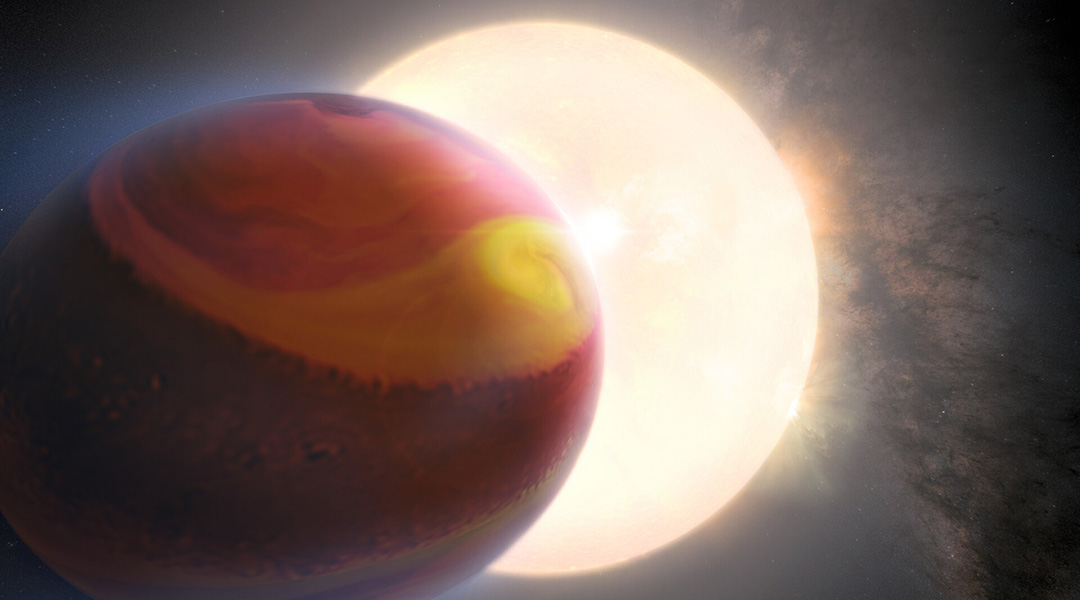Deleted
Deleted Member
Posts: 0
|
Post by Deleted on Jul 8, 2024 15:40:49 GMT
|
|
Steve
Hero Protagonist
 
Posts: 3,698
|
Post by Steve on Jul 8, 2024 18:09:45 GMT
I still struggle accepting that the core that hot can be solid but apparently it is so because of the pressure. As for that internal rotation being sometimes faster just plain puzzles me - why can that be so?
I will still believe the sun will rise tomorrow
|
|
|
|
Post by vinny on Jul 10, 2024 10:13:30 GMT
I still struggle accepting that the core that hot can be solid but apparently it is so because of the pressure. As for that internal rotation being sometimes faster just plain puzzles me - why can that be so? I will still believe the sun will rise tomorrow Pressure would make sense. After all under sufficiently high pressure even water doesn't boil below 250 oc. |
|
Steve
Hero Protagonist
 
Posts: 3,698
|
Post by Steve on Jul 10, 2024 18:26:00 GMT
Wow!
|
|
|
|
Post by Orac on Jul 13, 2024 8:49:26 GMT
The core of Jupiter is suspected to be metallic hydrogen
|
|
Steve
Hero Protagonist
 
Posts: 3,698
|
Post by Steve on Jul 13, 2024 11:58:49 GMT
The core of Jupiter is suspected to be metallic hydrogen Just a mind boggler that both in terms of what it would look like and how it got to be there. |
|
|
|
Post by Orac on Jul 13, 2024 12:26:52 GMT
The core of Jupiter is suspected to be metallic hydrogen Just a mind boggler that both in terms of what it would look like and how it got to be there. It's mind boggling and scary. I think Saturn is reckoned to have diamond rain falling through some section if its 'atmosphere' |
|
|
|
Post by montegriffo on Jul 13, 2024 19:51:41 GMT
Just a mind boggler that both in terms of what it would look like and how it got to be there. It's mind boggling and scary. I think Saturn is reckoned to have diamond rain falling through some section if its 'atmosphere'  Astronomers have taken a three-year-long view of an extreme heavy metal exoplanet called WASP-121b using the Hubble Space Telescope, enabling them to reconstruct its changing atmosphere and weather in a way that has never been done for a planet outside the solar system before. This revealed this violent and turbulent world is even more chaotic than scientists initially suspected. WASP-121b, a planet that is 1.75 times the size of Jupiter and orbiting so close to its host star that it completes an orbit in just 30 hours, which is one of the shortest orbits ever seen by astronomers. This proximity means that WASP-121b, located around 880 light-years from Earth is tidally locked, meaning one hemisphere of this planet (its “dayside”) permanently faces its star, while the other (the nightside) perpetually faces out into space. As a result of the constant bombardment of radiation, the dayside temperatures of WASP-121b –which, because of its size and proximity to its star, is classified as a “hot Jupiter” exoplanet — soar up as high as 4,700 degrees Celsius, vaporizing iron and aluminum. The intense heating of WASP-121b also generates powerful 11,000 miles per hour winds that blow vaporized metals from WASP-121b’s radiation roasted dayside to the planet’s cooler nightside, which still has a fearsome temperature of 730 degrees Celsius. Here these metal clouds mix with minerals, cooling, and falling as rains of iron, rubies, and sapphires. www.advancedsciencenews.com/astronomers-track-weather-on-an-exoplanet-that-rains-gemstones/#:~:text=The%20Hubble%20Space%20Telescope%20saw,iron%2C%20sapphires%2C%20and%20rubies. |
|
Steve
Hero Protagonist
 
Posts: 3,698
|
Post by Steve on Jul 13, 2024 20:35:19 GMT
Not my next holiday destination then
|
|
|
|
Post by montegriffo on Jul 13, 2024 20:37:02 GMT
Not my next holiday destination then It would be a pretty exciting sailing holiday with those windspeeds. |
|